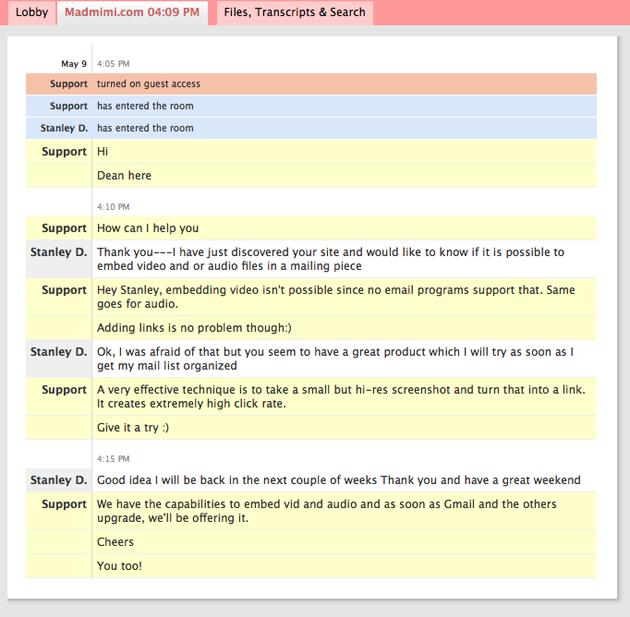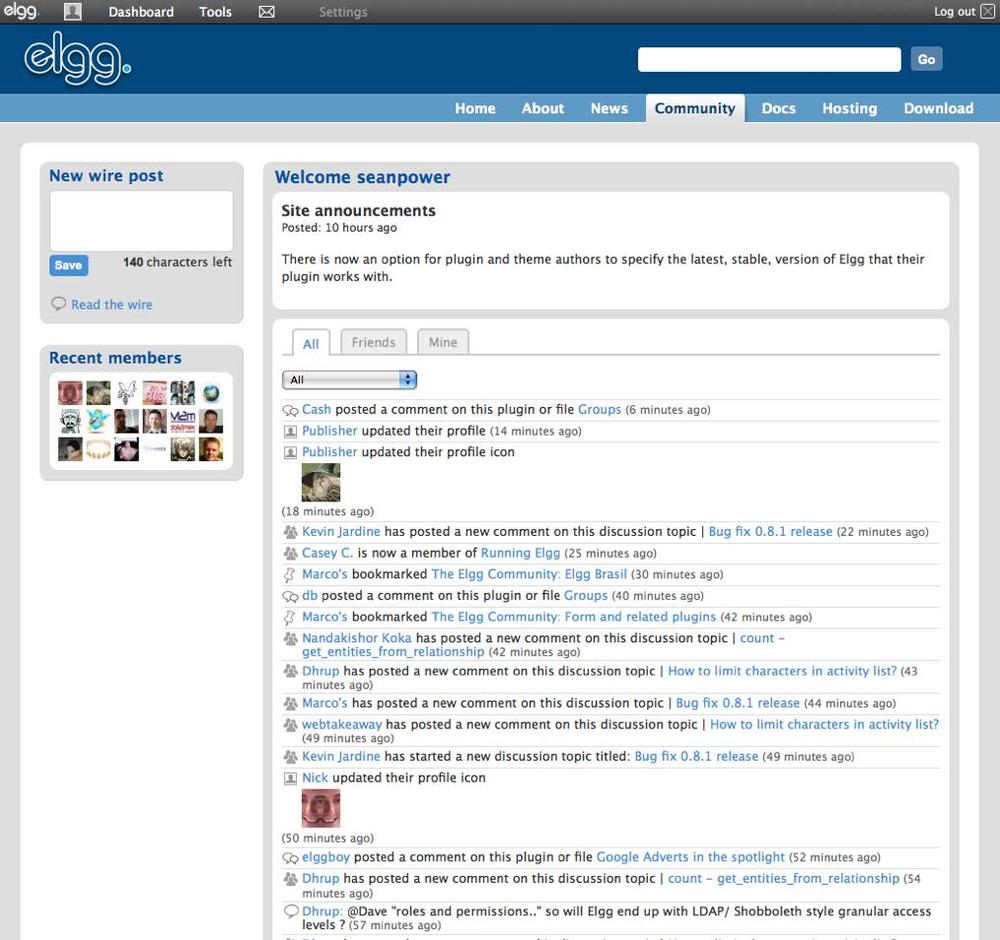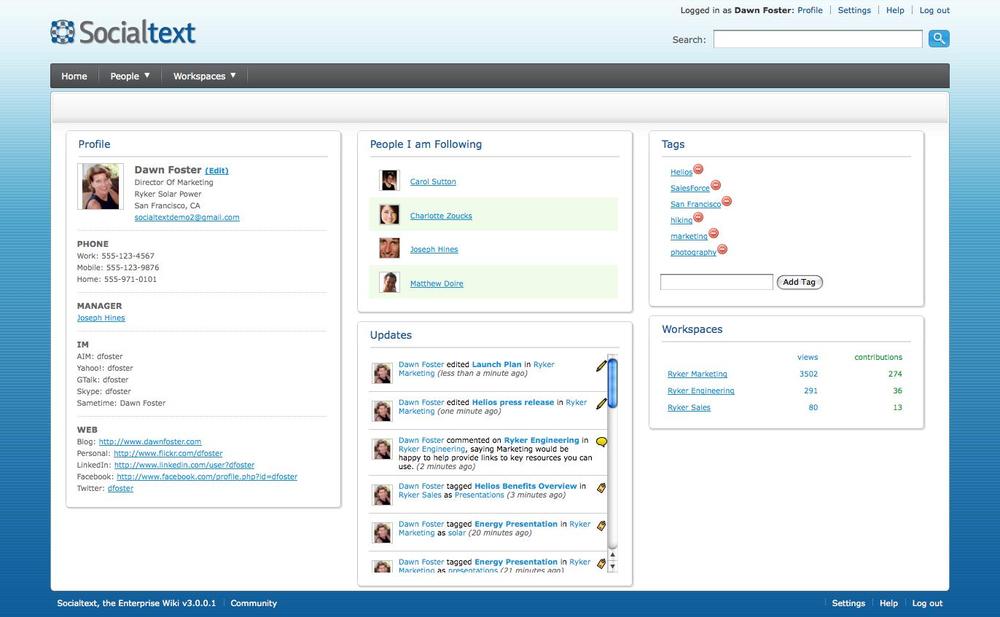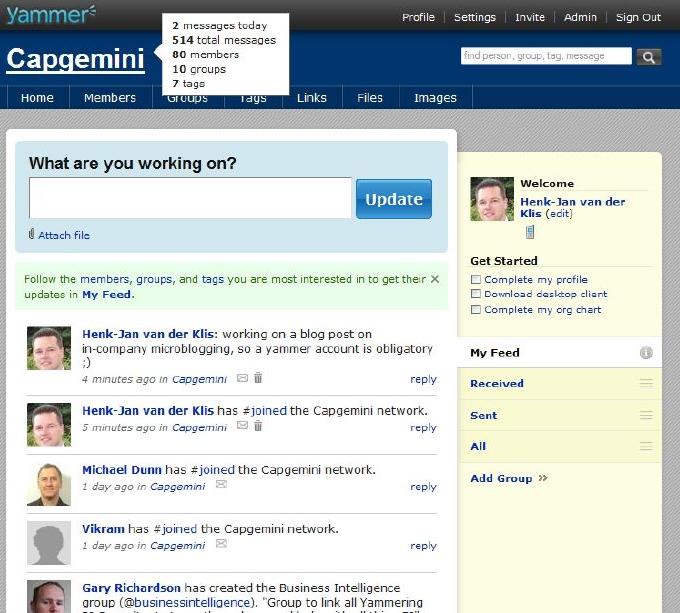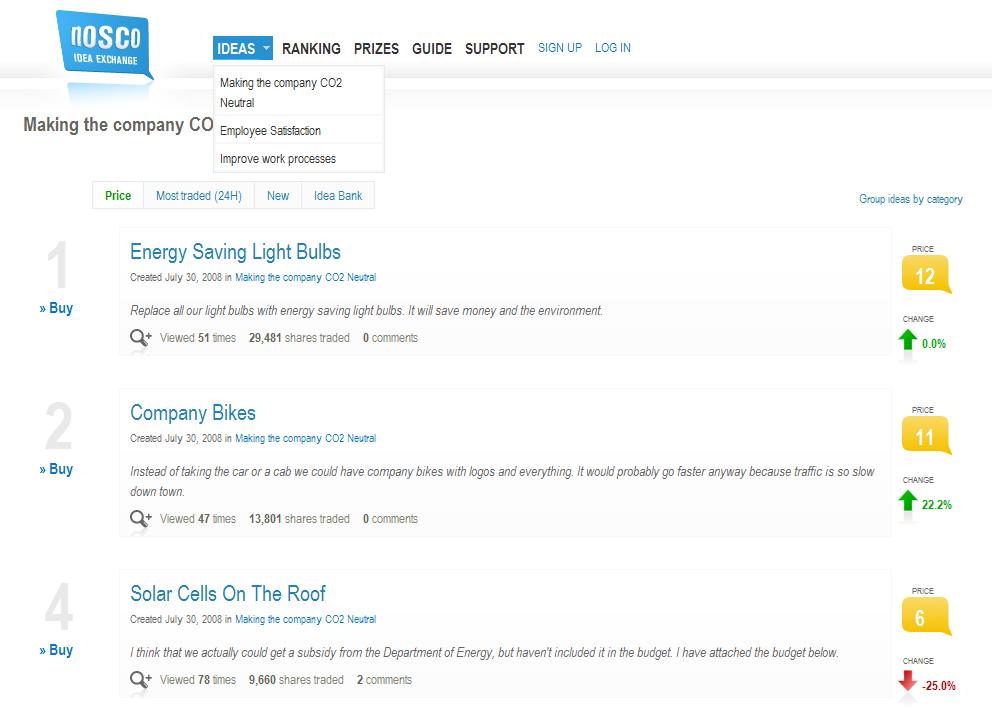Most companies already have the building blocks of a community. With email systems, organizational charts, and company directories, they have social graphs. Community platforms extend these systems rather than being standalone platforms. They incorporate several community models under a single umbrella.
With a known social graph, chat systems can tie into existing messaging servers. For example, Parlano’s MindAlign (now part of the Microsoft Live Communication Server) works with an employee’s existing contacts, as shown in Figure 15-1.
Hosted solutions, such as Campfire (shown in Figure 15-2) are geared toward smaller businesses that are looking for ways to reach out to one another in real time. These types of solutions are much easier to install and manage than enterprise platforms.
Figure 15-2. Hosted internal chat platforms like Campfire are aimed at smaller, more distributed organizations
Large enterprises will run chat internally in part because of reporting and compliance legislation. Some industries require that all interactions be archived and available for discovery in the event of legal disputes. Also, by using an internal chat system, a company can block outside chat and filter content that reaches outside organizations to reduce malware breaches and slow down corporate espionage.
Enterprise social networks are the rebirth of corporate intranets. They’re often tied to social graphs and the company directory, and they provide analytics on contributions. There are some open source alternatives to commercial in-house social networks. Elgg.org, shown in Figure 15-3, is one such example.
Other firms, such as Socialtext (Figure 15-4), tie together profile data, status updates, and content repositories across an organization.
Some organizations use wikis for technical information, particularly when it’s tied to engineering tools such as bug tracking and documentation. There are a variety of commercial and open source packages available, including MediaWiki, Twiki, Confluence, and extensions to trouble ticketing systems such as Jira. Unfortunately, because they’re not tied back to social graphs and employee databases, it can be hard to monitor employee productivity with such systems in ways that a company may require.
Many small organizations are turning to Google Sites or other SaaS-based document management tools that can be used as a sort of wiki. Unfortunately, purely hosted models like these lack many of the detailed analytics you get from running your own site, and won’t let you embed analytics into them.
Twitter’s rapid growth has given birth to many competitors, several of which have focused on the enterprise as a way to make money. In particular, Present.ly and Yammer (Figure 15-5) offer solutions for internally focused micromessaging.
These tools create ambient awareness about your coworkers and what they’re up to, and perhaps this is better than the traditional water cooler model. But while the basic functionality of micromessaging is simple, the real value of these solutions is in the way they collect and interpret what’s being said so that it becomes a resource for the rest of the company.
When considering micromessaging tools, it’s more important to look at how they aggregate and visualize content than at how they transmit messages. For example, social collaboration tools such as Brainpark analyze what’s being said, then try to offer relevant searches, documents, or coworkers, based on the task at hand.
There’s a close parallel in internal communities to reddit, Digg, and Slashdot: prediction markets. Prediction markets aim to harness the wisdom of crowds by letting people try to guess an outcome. Call them “Suggestion Box 2.0.”
There are dozens of companies working in field of prediction markets, which has been around for over a decade. These companies include Consensus Point, NewsFutures, Xpree, Nosco (shown in Figure 15-6), QMarkets, Exago, Prokons, Spigit, and Inkling. With mainstream acceptance of wisdom-of-the-crowd models and broader adoption of enterprise communities, prediction markets are becoming an integral part of the way that some companies make decisions.
You’ll need to factor predictive market monitoring and reporting into the rest of your internal community monitoring strategy as the technology becomes more commonplace.


